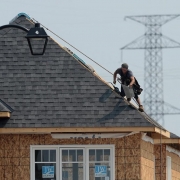The Canadian housing market had a rough year in 2018: sales dropped by 11 percent while the 4.1 percent decline in average price was the worst performance seen since 1995.
But it didn’t have to be that way, suggests the Canadian Real Estate Association (CREA’s) top economist.
If federal policymakers hadn’t gotten involved by introducing new stress testing, Canada’s housing market probably would’ve reached never-before-seen heights in 2018, writes Gregory Klump, the association’s chief economist, in an Economic Insight.
After all, he notes, the market had lots going for it. The economist reasons that strong rates of employment and immigration, half the Millennial generation turning 30 — and thus entering the prime age for first-time homebuyers — and low interest rates created an environment for a booming market.
But at the onset of 2018, new mortgage stress testing was introduced from federal watchdog the Office of the Superintendent of Financial Institution’s “Guideline B-20” — and that took the wind out of the market’s sales.
The measure forced borrowers seeking an uninsured mortgage from a federally regulated financial institution to qualify at a rate that’s 200 basis points over what they’re applying for or that matches the Bank of Canada’s five-year benchmark rate, whichever of the two is higher.
Previously, borrowers could avoid stress testing by putting forward a downpayment of 20 percent or more on an uninsured mortgage.
Of course, even with the stress testing in place homebuyers can go to provincially regulated private lenders. But they typically offer higher interest rates than the big banks.
So with borrowers now facing a higher bar for mortgage qualification, CREA’s Klump doesn’t see the Canadian housing market regaining its stride any time soon.
“Unlike past policy changes, housing markets do not appear to be adjusting to this one. The boot prints from B-20 will continue to keep housing markets in check in 2019—and beyond,” Klump writes.










 Maziar Moini, Broker of Record - Home Leader Realty Inc.
300 Richmond St. W., #300, Toronto, ON M5V-1X2
Maziar Moini, Broker of Record - Home Leader Realty Inc.
300 Richmond St. W., #300, Toronto, ON M5V-1X2


